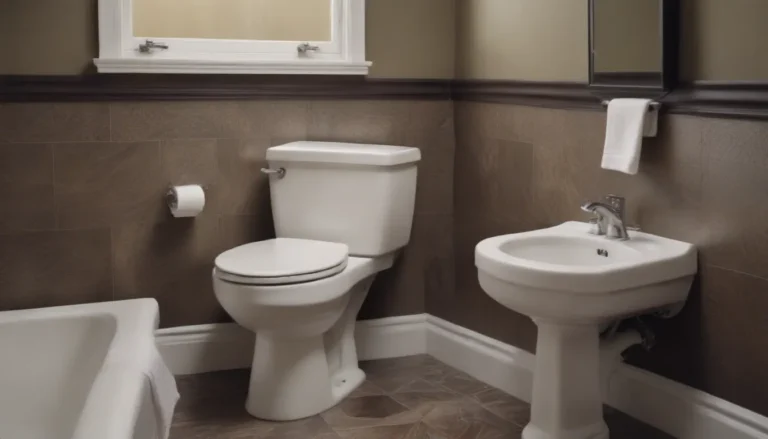Transforming Your Bathroom with Beautiful Tiles and Healthy Grout: A Comprehensive Guide

If you are someone who appreciates the elegance that beautiful tiles bring to your bathroom, then you are familiar with the importance of grout. Grout is necessary to keep your tiles together, but it can be a bit of a hassle to maintain. Due to its porous and light-colored nature, grout is prone to stains and damage from water. No one enjoys dealing with stained, mildewed, or cracked grout, as it not only affects the appearance of your bathroom but can also lead to major water damage if left unattended.
So, how can you keep the grout in your bathroom looking fresh and new? From daily cleaning routines to grout renewal and replacement, we’ve got you covered. Let’s dive into the world of grout care and maintenance to ensure your bathroom remains beautiful and functional for years to come.
The Importance of Keeping Your Grout Clean
Everyday activities in your bathroom, such as showering or taking a bath, can contribute to the build-up of dirt, soap scum, and mildew on your grout. Establishing a regular cleaning routine is essential to prevent premature staining and damage to your tiles. Taking a few minutes each day to maintain your grout will save you time and effort in the long run.
Daily Maintenance Routine:
- Use a good quality squeegee to remove excess water from your tiles and glass walls after every shower or bath.
- Lightly spray your tile and glass surfaces with a mild, daily shower cleaner to prevent the build-up of grime.
- Consider making your own cleaner using a 4:1 water to vinegar solution or opt for a green cleaner for an eco-friendly option.
Following this daily routine will help keep your bathroom clean on a daily basis and reduce the need for extensive scrubbing sessions.
Weekly Deep Cleaning:
Even with regular daily maintenance, it’s important to give your shower or bath a thorough cleaning at least once a week. Body oils and soap scum can still accumulate on the surfaces over time, leading to stubborn stains on the grout.
- Create a paste using water and baking soda to scrub the grout with a grout brush or a used toothbrush.
- Rinse the grout with clear water, or use hydrogen peroxide for tougher stains.
- Ensure to rinse off any vinegar residue before using hydrogen peroxide to avoid chemical reactions.
A weekly deep clean will help maintain the cleanliness and brightness of your grout while preventing the build-up of grime and mildew.
Dealing with Stubborn Stains on Your Grout
Sometimes, despite your best efforts, grout can become heavily stained and require more intensive cleaning methods. When your daily shower cleaner or baking soda paste no longer suffice, it’s time to bring out the big guns.
For Seriously Stained Grout:
- Use a bleach pen to target specific areas of stained grout without affecting the surrounding tiles.
- For overall disinfection and stain treatment, opt for an oxygen-based powdered bleach that is gentler on the grout.
- Apply the bleach with a brush, let it sit for 10-15 minutes, and rinse thoroughly with clean water.
- In extreme cases, a chlorine bleach spray can be used, but test it on a small area first to avoid damaging the tiles.
Remember to always wear gloves when handling bleach and avoid mixing it with other cleaning products to prevent harmful chemical reactions.
Renewing Your Grout for a Fresh Look
If traditional cleaning methods fail to remove stubborn stains and discoloration from your grout, grout renewal products can be a good option. These retail products can add a protective layer of color to your grout, giving it a fresh and revitalized appearance while extending its lifespan.
Knowing When It’s Time to Replace Your Grout
Despite your best efforts, there may come a time when your grout needs to be replaced due to severe damage or wear and tear. Signs that indicate it’s time to change your grout include flaking, cracking, and tiles coming loose.
- If you are handy with DIY projects, you can attempt to change the grout yourself.
- For a more professional touch, consider hiring a grout specialist to redo your grout.
- Take this opportunity to update your tiles as well, as modern styles and designs can breathe new life into your bathroom.
By taking proactive steps to maintain and care for your grout, you can prevent costly water damage and keep your bathroom looking fresh and inviting for years to come.
Additional Tips for Grout Care and Maintenance:
- Avoid using abrasive cleaners or tools that can damage the grout.
- Seal your grout every 1-2 years to protect it from stains and moisture.
- Keep your bathroom well-ventilated to prevent the build-up of mold and mildew.
- Address any leaks or water damage promptly to prevent further issues with your grout and tiles.
Remember, a little effort in maintaining your grout on a regular basis can go a long way in preserving the beauty and functionality of your bathroom. So, roll up your sleeves and show your grout some love!
References:
– Washington State Department of Health. Dangers of Mixing Bleach with Cleaners.
Whether you are a seasoned DIY enthusiast or someone looking to spruce up their bathroom, caring for your grout is essential in maintaining the beauty and functionality of your tiles. Implementing a regular cleaning routine, exploring different cleaning methods, and knowing when to replace your grout are key steps in ensuring your bathroom remains a welcoming oasis. So, next time you step into your sparkling clean shower or bath, take a moment to appreciate the beauty of your tiles and the hard work you’ve put into keeping them pristine.





